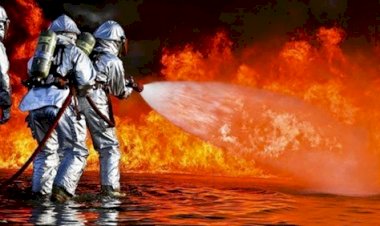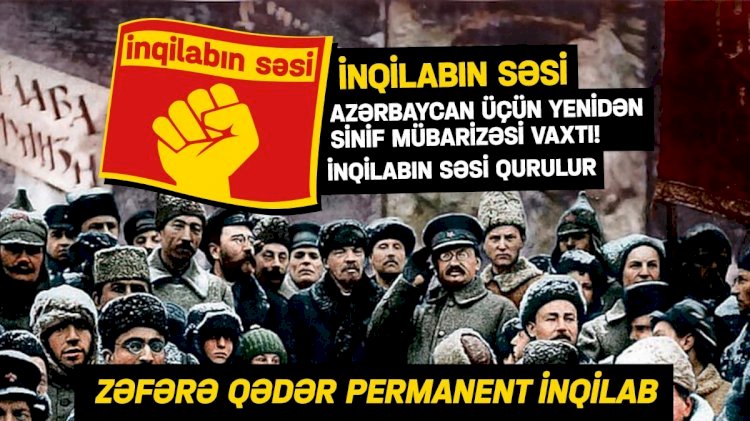Syria Is on The Brink of a New Spiral of Violence

On the night of December 8, an era ended in Syria: The Assad regime, which had ruled the country for more than half a century, was overthrown. An “act” of the bloody civil war that broke out in 2011 and led to the deaths of hundreds of thousands of people and the displacement of millions ended. We say an “act” because it seems impossible for the spiral of violence to end with the current actors who control the country’s destiny and the possible imperialist interventions that will come to shape the new era.
Although almost every development in any country in the Middle East has internal dynamics, they cannot be evaluated independently of the current goals of the US-Israel bloc. The rapid collapse of the Assad regime must also be analyzed considering both of these. First of all, the Assad regime’s rapid loss of Hama, Homs and Damascus after the fall of Aleppo shows the extent of the exhaustion the regime has reached after 13 years of intense civil war. A similar level was reached in 2014; however, the regime managed to survive with Russia’s intervention in the war. Since that day, a status quo had been established in which the US-backed PYD-YPG dominated the east of the Euphrates, while Turkey and Erdoğan-backed jihadist actors dominated the west; hundreds of thousands of jihadists were forced into Idlib, and the regime dominated the south from the Mediterranean coast. Of course we have seen the serious change in the balance of power between the existing actors in the passing years after the attacks that began on November 27. As a reminder, we summarized this situation in our previous article as follows:
“The Assad regime, burdened by its hollow bourgeois structure, has failed to inspire societal mobilization, organize new combat-ready military units, or instill motivation among its people. This is despite the fact that substantial segments of the population harbor deep-seated hatred for the jihadists. Civil wars, however, are profoundly influenced by political and class dynamics, and the Assad regime has struggled to leverage these factors to its advantage. The bourgeois structure of the Assad regime is far from organizing the necessary dynamism, determination, and sacrificial spirit in the people. When the economic crisis, the cutoff of foreign aid, bad management, and corruption are added to this, the Syrian Army has shattered at the moment of attack, let alone sensing the jihadist threat. There may be many other examples that can be given, but think about it, you have Iran, which is an accomplished drone manufacturer, and Russia, which uses them intensively in Ukraine; but the Syrian Army has also remained completely pedestrian in the field of drones. On the contrary, it is HTS that has adapted to drone wars. We see a Syria-Iran-Russia axis that does not even have the intelligence that tens of thousands of jihadists are preparing for an attack. The jihadists led by HTS are very well equipped, have strong intelligence, and have access to high-tech weapons. Moreover, while it is always easier to defend in such wars, it has become clear that the Syrian Army does not even have enough soldiers to hold the positions.”
Another important factor that paved the way for the regime’s overthrow is the development process experienced in the all-out war launched by the US and Israel against the Iran-centered resistance axis after October 7, 2023 in the Middle East: During this 14-month period, Hamas suffered a serious loss of power, primarily in the genocide launched against the Palestinian people in Gaza. Then, Hezbollah was severely weakened by serious attacks launched in Lebanon; its historical leader Hassan Nasrallah was assassinated. Hezbollah, along with the Iranian-backed Shiite militia forces, was one of the important military forces that kept the Assad regime on its feet throughout the civil war. It was expected that the US and Israel would increase the pressure on the Assad regime in the wake of Hezbollah, and indeed, serious attacks have been carried out in recent months. Iran’s proxy forces were paralyzed inside Syria and were forced to withdraw. As a result, with the overthrow of the Assad regime in Syria, Iran’s resistance axis was effectively destroyed. The road connecting Iran and Lebanon was completely closed. With this result, the doors to an imperialist intervention against Iran were opened wide.
The fate that has befallen Assad has reminded us once again that there are no eternal friendships and partnerships in the imperialist struggle for partitioning; what really matters is national and imperialist interests. We are talking about the Putin regime here. The Putin administration, which has been waging a very costly war in Ukraine for nearly three years, was ultimately forced to make a decision and made Ukraine a priority. On the other hand, both Putin’s Russia and the Mullah regime in Iran did not want to bear the cost of trying to keep a regime whose army and state apparatus had already begun to disintegrate and therefore had no strength left to fight. It is obvious that Russia will consider itself in the win if it maintains its bases in Tartus and Latakia at this point.
For now, the Zionist regime in Israel and Erdoğan stand out as the actors who got what they wanted. As soon as Assad fell, the Israeli army declared the Withdrawal of Forces Agreement signed in 1974 invalid, which included the disarmament of the Golan Heights, and began annexing Syrian territory. In the north, the Syrian National Army (SNA), channeled into the fight against the Syrian Democratic Forces (SDF) led by PYD-YPG, captured Manbij. There is no doubt that the Erdoğan regime, which saw the opportunity in Trump’s call to the Biden administration via X, “Syria is not our war, do not intervene,” will try to take the largest piece from Rojava until a new balance is established.
Of course, it is necessary to discuss the Rojava issue seperately in detail. When it became clear that the Assad regime would be overthrown, Salih Muslim and Mazlum Abdi made positive statements about HTS and stated that they were open to dialogue. The Kurdish people have undoubtedly paid a great price in these 13 years. Trying to keep a place within the existing balance of power and establish partnerships with major powers in order to realize national aspirations and protect the historical gains achieved is not an unusual attitude for a national movement. What really needs to be discussed is whether the point reached will open the way for a real liberation for the Kurdish people. The Kurdish national movement will inevitably have to preserve its relations with the US-Israel alliance and will be obliged to protect the interests of these powers when necessary as the Erdoğan regime and the jihadists, who have become the leading actors in Syria, hang like the sword of Damocles over its head.
The US-Israel and their partners will try to shape the dark future of Syria under the leadership of Jolani and HTS, whose image they have begun to polish in the international media. However, whether this is possible or not is debatable. There is no doubt that radical Islamists are not a single entity and that, although they are persistently labeled as “moderate”, their radical tendencies will find the right climate in Syria to flourish. We have seen how the rise of Salafi-jihadist radicalism in Syria has been reflected in Turkey in the past with bloody massacres. These elements, which the government feeds and grows, will of course always pose a threat to the peoples of Turkey.
In conclusion, an era has ended in the Middle East. An anachronistic regime has become history. Let's leave discussing the sins and crimes of the Assad regime and creating a revolutionary clamor from this to liberals like Ufuk Uras who are in complete integration with the status quo. There is no need to wait to see how the Syrian issue ends to learn that imperialist interventions have never resulted in good things for this region. If there is to be a future for all oppressed and exploited peoples in the Middle East, this is only possible with the creation of an internationalist revolutionary focal point and a fight for the Socialist Middle East Federation.
































